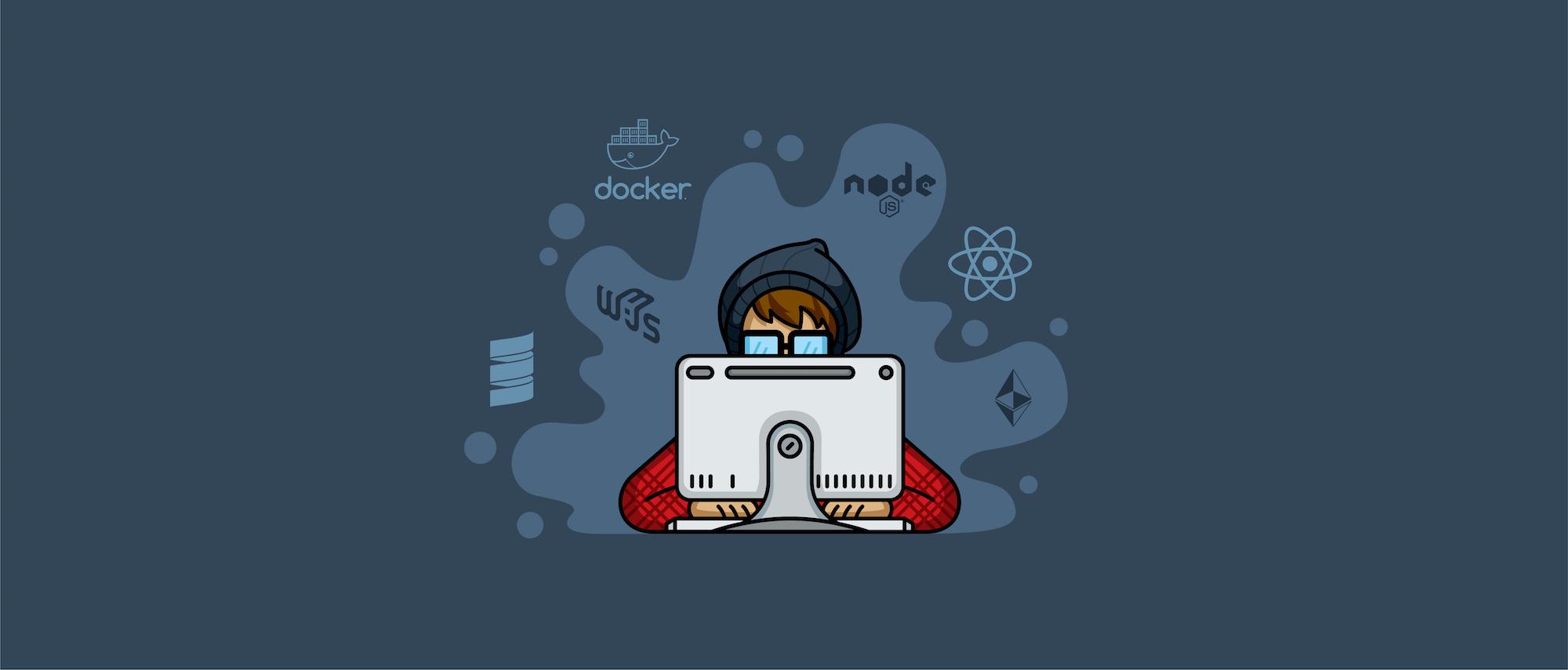Preamble
VETRI was born 3 years ago in August 2017. The brainchild of Procivis AG co-founders and the output of their relentless concerns for creating products that would stay relevant 10 years later. The contemporaneous emergence of Blockchain technology, and along with it the values and the promises that sustained its popularity – decentralization, the principles of fairness and transparency for a new data economy and more importantly, the emergence of paradigm-shifting business models, – were determining factors in deciding to go ahead with the VETRI project. Or VALID rather, its original name. A project, which by its very nature and far-fetched vision, would never see the light of day unless financed via a brand new kind of fundraising model, the ICO, and the resulting issuance of one’s own digital currency.
At the time, phrases such as “Data is the new oil” (The Economist 2017) or “In the future, consumers will expect to be remunerated for their data” (Maurice Levy, Publicis Chairman, 2018) had yet to be coined. But for those of us in the field, these concepts were already in the air. Procivis AG is now the Swiss leader in government-issued digital identity and its mobile app solution has been in use in several Swiss cantons since 2018.
It’s a peculiar thing, this “eID”. For one, it’s not a “thing” per se, since it is a digital product. And to its users, it’s mostly just a mobile app, albeit one with a rather complex backend. For governments around the world, the deployment of digital identities constitutes a strategic priority, one that can confer significant competitive advantages on issuing nations. But for the man on the street, well, not so much. To this day adoption rates for “retail” eID solutions are lukewarm at best. There are two main reasons for this: firstly, people don’t trust it and neither should they. From the dawn of the digital age, enabling technologies and business models, but more specifically their respective failings, have taught us that nothing is safer than a physical passport in one’s safe place. Secondly, and that is particularly true in these parts of the world where physical infrastructures work so efficiently, people just don’t see the point of it or the need for it.
For the private sector, however, online businesses, in particular, it is again quite a different story. For one, the identity attributes that matter to companies aren’t so much about citizenship, age, or legal status. Rather, it is what they call the “psychometric attributes” that are of interest to them. Together with their respective “demographic” attributes, they do a decent enough job at predicting what people are likely to buy next and whether they “can” pay for it. The significance of the word “can” in the sentence is crucial because it determines whether these attributes – and the “user profiling” they together form – possess any relevance or value. That is because bots, duplicates, and fake personas aren’t able to buy much. This inescapable connection between core identity and personal data is what prompted the idea behind VETRI. An individual’s eID is what breathes relevance and value into his or her data because it guarantees that a real, unique living and breathing individual is generating it (vs. bots, personas, duplicates which continue to plague the digital space and to burden the digital marketing sector with enormous inefficiency costs). If we could just find a way to anonymize this data, yet guarantee its integrity and genuineness, we would accomplish step 1 of our vision: a personal Data Vault and a connected Market Interface allowing users to transact one’s anonymized personal data and sell it to the highest bidders. And in order to bundle it all up into one compelling proposition – one whereby VETRI is both a sustainable business and a non-economic intermediary – a hybrid utility/payment token would be issued and serve 2 key functions:
- A validation / verification mechanism for the eID agnostic* module
- A payment and reward token for the efficient monetization of users’ data
*because proprietary eID solutions are so 2005!
All we would have to do is add a two-sided marketplace* to this mix and we would be in business. Or so we thought,… for about 10 minutes. Any Google search relative to “how to build a successful two-sided marketplace” is guaranteed to tamper one’s enthusiasm as one quickly concludes that, at best, creating one from scratch uses up a significant amount of resources and is therefore exorbitantly costly. At worst, it is an almost impossible endeavor and one that is 25 years too late. From then on, it was quite clear that a grand bold vision without a sensible go-to-market strategy wasn’t worth anyone’s time, let alone money. We had hit a road-block and our white-paper was stalled for weeks.
*A Two-Sided Marketplace business model is a platform for economic exchange between two distinct user groups that provide each other with the benefits of a large network with one group providing the demand function while the other fulfills the supply role.
Market reality check
To make matters worse, 3 years of experience at Procivis and intensive microsite testing was telling us that the market buy-in for eID products was practically an oxymoron. To illustrate this point, conversion rates averaged 2.5%, which means that when prompted, say via an ad, the average internet browser expresses interest only 2.5% of the time. These low conversion rates do not make a market, at least not one we were willing to invest resources into and attack head-on. We had to find another way, another angle. And in hindsight, we were not wrong. To this day the vast majority of pure players in the sector are struggling with dismal adoption rates or are defunct.
Luckily for us, came October 2017 we stumbled upon a sub-sector previously undetected on our radar but one that was rapidly emerging from the established, albeit dusty, “Market Research & Survey” Industry: the “Paying Survey” market. These “new kids on the block” – oftentimes former Google or Facebook employees – were making a killing harvesting the power of global networks and the endless supply of “surveyees” they provide, and then connect them with the “surveyors”: potentially every big company in the world. As an extra-kick, and boost to growth, people participating in the surveys would even get paid a small fraction of the fees paid by corporate clients to these new fast-growing startups for each survey that would get completed on their behalf.
Today, LUCID, the industry’s pioneer and VETRI’s strategic partner, is “the world’s largest community of real people ready to share answers, opinions, behaviors, profiles, and more “, according to their website. In 2020, LUCID expects to redistribute some USD 200m worth of rewards to its partner network. And this is just one player. Estimated to generate over USD 8bn in revenues annually and growing at double-digit rates, this industry is no joke. In November 2018, enterprise software giant SAP agreed to acquire Qualtrics for USD 8bn, just before the survey and research software company was set to go public.
From Vision to Market
This matters because that meant that we wouldn’t have to solve the impossible two-sided marketplace quandary after all. Rather, it could resolve itself: we could simply start off by becoming a player in an existing market, but one with a significant competitive advantage, one that only our business model, straight out of a blockchain textbook, could afford. As a non-economic intermediary – which is another way of saying that we don’t need to take a commission to be sustainable and can pass on 100% of the value to users, – we could reward participants up to 3x times as much as our biggest direct competitors. In a market where participants can spend 25 minutes answering questions in exchange for 15 cents, surely, we would get noticed if we could offer 75 cents instead for the very same amount of effort. And we were right. Today, our real conversion rates average 20%+.
Now, is that a sexy proposition in itself, and would we have been successful in raising USD 12 m based on this use case alone? Of course not. And that’s why this first use case was always depicted as a first stepping stone, but one that is tangible and actually exists in the real world. In fact, at the time of the ICO, we came close to being ridiculed with our very “unappealing” first milestone on our roadmap. It was clear that the crypto investor community was not able to relate to it and much favored the hymns sung by our competitors at the time and who promised advanced applications and technologies fit for markets that had yet to be born, let alone proven.
And to some extent, we did the same. Let’s face it, the market for our next use case (see WP) and potential disruptor to the digital marketing industry does not yet exist. We will have to create it. Except that soon, we might just stand a chance. Because by capturing only a small fraction of a USD 8bn+ market and the participants that go with it, we are destined to get noticed. And by “noticed”, we mean “ready to roll out phase 2” in partnership with large consumer product companies.
We, at VETRI, want to dream of the next digital age as much as anyone reading this. Some of us could even be labeled idealists. But before that, we are business-oriented people. We believe that big, bold visions need to be broken up in chewable pieces and that each step of the way we need to work hard towards ensuring that each successful step helps us get to the next. The story of Amazon probably constitutes the best-known and most successful case study and is an illustrious example of “how it’s done”*.
*Quick reminder: Amazon first got off the ground by becoming the leading global seller of second-hand books.
Of course, mistakes were made
“Vision is always 20/20 in hindsight”, as the saying goes. The ICO for VETRI debuted in February 2018, under the auspices of Procivis AG, during the very last window still open for such ventures and just ahead of the infamous “crypto winter”. By the time Procivis was able to access the funds from said ICO, USD 12m equivalent in crypto money had turned into USD 4.5 m. In the 6-8 months that followed it was decided by Procivis’ management that it was better to be safe than sorry and consequently to cash in USD 4.5 m rather than risking further depreciation. But that was enough to cover the costs of delivering at least 2/3 of the way on the product roadmap, after which point the project would be able to sustain itself. Furthermore, years spent in private equity have taught us that too much cash in a startup can be just as detrimental as too little.
The mere thought of failing to deliver and quite possibly ending up in the media for doing so, as was the case for many of our peers at the time, was in fact paralyzing at times. VETRI, under Procivis AG, began to develop a culture of excessive prudence. As a supplier to the Swiss government, Procivis had to maintain an impeccable reputation and pristine integrity. It goes without saying that the Company could never allow being perceived as churning out substandard products.
Prudence and perfectionism meant that things moved relatively grandly but undoubtedly slowly. On the business side of things, use cases and hypotheses were carefully tested and constantly debated. As per IT development, everything had to adhere exactly to the principles and tenets set forth in the Whitepaper. But building decentralized applications can get tricky very fast. External advisors and third-party IT providers were regularly employed to ensure the quality of our tech development and to validate our progress.
As one might observe, and to paraphrase an allegory once used at one of our Board Meeting, by the time of our MVP release in October 2019, we had “built a tricycle with a Rolls-Royce Aviation engine”. Of course, that is not to say resources were wasted. The said engine will eventually serve VETRI well and already is. But building a backend to this degree of complexity certainly took time.
Furthermore, the transfer of knowledge and skills that occurred in the fourth quarter of last year, when the VETRI Foundation took over the IP and the operations from Procivis, also meant that production was slowed down.
Today
Today marks the release of our beta version. It is the result of 2.5 months of road testing and includes features that bring the application on par with its direct competitors. With one key differentiating factor: VETRI is at least 3X more rewarding than its peers (Swagbucks and the likes). But for us at VETRI, today marks a new dawn altogether: one that is indicative of VETRI’s perennity going forward and one that opens up the possibilities for seizing the next opportunity and for bringing to life the applications we dreamed of almost 3 years ago to the day.
What exactly do we mean by that? Well, our immediate aim is to quickly gain a notable market share in the Research & Survey sector. By doing so, we will inevitably acquire a significant, growing user base who, over time, will get to trust us. Or rather, our business model. One that is antagonistic to what is currently in existence and whereby centralized models benefit hardly anyone outside of Silicon Valley. Our hopes are that, sooner rather than later, we will get there.
Tomorrow
So far, every growth indicator tells us that we will. VETRI will achieve enough clout and acquire a large enough user base that powerful global corporations, now reticently dependent on the status quo and the GAFA’s of the world, will take notice. Our hope is that one day, we will look back and think: “how come it took so long to get to this point?”. A point in time where data is yours and yours to use, not for others to misuse and abuse. Until then, there will be considerable headwinds to face. But luckily for us, the alternative dystopian scenario – nothing other than the exacerbation of the current state of things – few of us wish for it.
To that end, we are happy to announce that, in the coming months and following the acquisition of the Swiss “Fair Data” Trademark by VETRI, Monique Morrow will be carrying out a number of initiatives in Switzerland and abroad in an effort to amplify awareness on the topic, with blue chip corporations in particular. We are already very grateful for her contributions, past, present and future, and are proud to count her as President of the VETRI Foundation.
Last but certainly not least, we wish to take this opportunity to sincerely thank you all for your unfailing support, loyalty, and patience that got us to this day.




